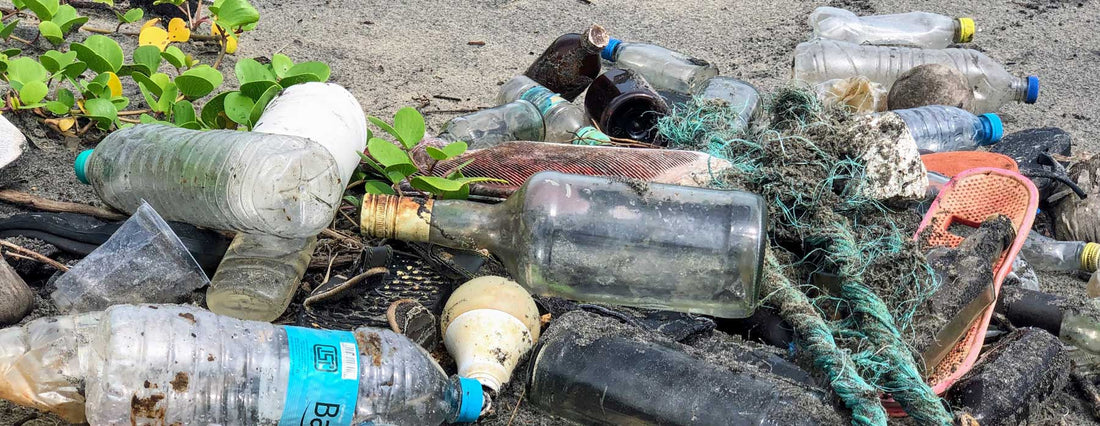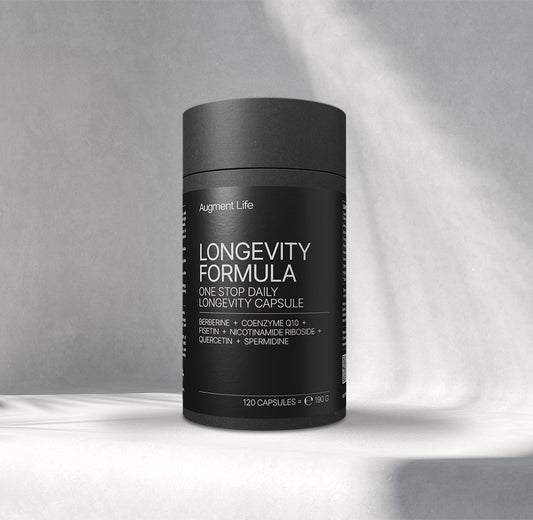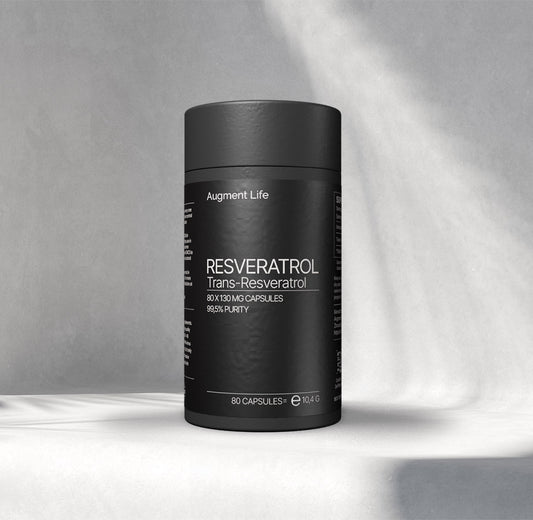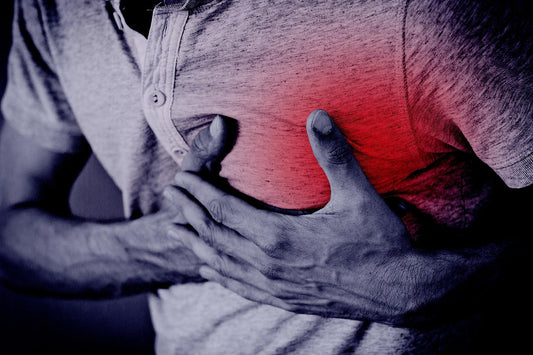Packaging materials are a big deal, folks. They have a significant impact on the environment, and we need to think about the carbon footprint of each material. In this post, we'll talk about the CO2 footprint of plastic, glass, and paper packaging, as well as the impact of shipping these materials.
"Recyclable" doesn't always equal "recycled"
According to the United States Environmental Protection Agency, only about 8.5% of plastic produced in the US is recycled. The rest ends up in landfills, incinerators, or the environment. While plastic recycling rates vary by country and region, it's clear that there is still a long way to go in reducing plastic waste.1
Greenwashing and Packaging Labels
With the growing concern about the environmental impact of packaging materials, many companies are starting to use packaging labels such as "recyclable" or "made from recycled materials" to appeal to eco-conscious consumers. However, not all of these labels are created equal.
One common practice is "greenwashing", where companies make exaggerated or misleading claims about the environmental benefits of their products. For example, a product labeled as "recyclable" may not actually be recycled due to lack of infrastructure or high costs. Or a product labeled as "made from recycled materials" may only contain a small percentage of recycled materials, making the overall environmental impact minimal.
When it comes to plastic packaging, it's important to understand the difference between "recyclable" and "made from recycled materials". "Recyclable" means that the material can be recycled, but it doesn't necessarily mean that it will be recycled. On the other hand, "made from recycled materials" means that the material is made from recycled content and is therefore more sustainable.
When choosing packaging materials, it's important to look for labels that indicate high levels of recycled content, such as "made from 100% recycled materials". Additionally, it's important to consider the entire lifecycle of the product, including how it will be disposed of after use.
By being aware of greenwashing and understanding the difference between packaging labels, consumers can make more informed decisions and choose packaging materials that are truly sustainable.
Plastic Packaging
Plastic is a widely used packaging material because it's durable and cheap. But let's be real, plastic production and disposal are like that one friend who always ruins the party. The production of plastic requires massive amounts of fossil fuels, which leads to greenhouse gas emissions. And it's only getting worse. Plastic production is increasing every year, leading to more greenhouse gas emissions and contributing to climate change. On top of that, plastic waste can take hundreds of years to decompose. It pollutes our oceans and harms wildlife. In fact, plastic packaging is a significant contributor to plastic waste in oceans, causing harm to marine life and disrupting ecosystems.
According to a study by the European Commission, every ton of plastic packaging produced emits around 1.83 tons of CO2. However, the weight of plastic is significantly lighter than glass or paper, which means that less CO2 is emitted during shipping.2
Glass Packaging
Glass is often considered a more sustainable packaging option compared to plastic. It's made from natural materials, like sand, and it's recyclable. But don't get too excited, glass production has its own problems. It requires high temperatures, which can lead to significant greenhouse gas emissions. Also, glass is heavier than plastic, so it requires more energy to transport. Glass packaging also has a higher risk of breaking than plastic, which can lead to injuries, especially during transportation and disposal.
According to a study by the European Container Glass Federation, every ton of glass packaging produced emits around 0.67 tons of CO2. However, the weight of glass is significantly heavier than plastic, which means that more CO2 is emitted during shipping.3
Paper Packaging
Paper packaging is a popular option because it's biodegradable and recyclable. But let's not forget, making paper requires significant amounts of water and energy, and it contributes to deforestation. The use of paper packaging has led to significant deforestation in many parts of the world, destroying habitats and increasing the risk of climate change. Additionally, transportation of paper products can result in significant emissions, especially when they are transported over long distances.
According to a study by the World Wildlife Fund, every ton of paper packaging produced emits around 1.41 tons of CO2. The weight of paper is in between that of plastic and glass, meaning that the CO2 emissions from shipping are also in between those of plastic and glass.4
This is why Augment Life uses FSC certified paper. The FSC mark stands for certification that the paper has been sourced with responsible methods that have avoided environmental damages.
We also love paper more than glass because we know (a) if it falls into a river or landfill it will biodegrade quickly. And (b) paper is significantly lighter than glass so when it is shipped whether by land, sea, or air, it will have a smaller carbon footprint. Plus they are beautiful and often are kept by our customers and used for storage of crafting supplies, collectibles, and more!
Why are most supplements stored in plastic?
The sad truth here, everyone, is that it's cheap. When ordered in the thousands, a plastic container can cost as little as a few cents. Compare that to a paper or glass container, which will always cost five-to-twenty times more than plastic, no matter what quantity is produced. For now, sadly, plastic works really great, it keeps things dry and air tight and it's cheap! But it has a cost, fossil fuels (oil) must be taken from the ground to produce the chemicals needed to create plastic containers. The production thereof, the supply chain, the end of life of which, all leads to microplastic in the soil, water, and foods all living things need to live. And it is not uncommon for plastic to be found in the stomach of sea animals like whales, turtles, and fish. We realize plastic is crucial for medicine, it is a valuable innovation that will not disappear anytime soon. But when it has sufficient substitutes like our paper tubes, we believe this is a valuable difference to make. And it doesn't harm the shelf-life of the supplements
Conclusion
In conclusion, each packaging material has its own carbon footprint and environmental impact. While plastic is a widely used packaging material, it has significant environmental consequences. Glass and paper are often considered more sustainable options, but they also have their own drawbacks. It's important to consider the entire lifecycle of packaging materials and choose the most sustainable option based on individual needs and circumstances. Sustainable packaging can help reduce greenhouse gas emissions, preserve natural resources, and protect the environment. Additionally, we must consider the impact of shipping these materials, as the weight of each material affects the amount of CO2 emitted during transportation.
Stay tuned for more insights, folks.
References
- United States Environmental Protection Agency. (2021). Facts and Figures about Materials, Waste and Recycling.
https://www.epa.gov/facts-and-figures-about-materials-waste-and-recycling/plastics-material-specific-data#Plastics - European Commission. (2016). Emissions from plastics production: An urgent problem. https://ec.europa.eu/environment/integration/research/newsalert/pdf/emissions_from_plastics_production_an_urgent_problem_IR6_en.pdf
- European Container Glass Federation. (2018). The carbon footprint of glass packaging in the European Union.
https://feve.org/wp-content/uploads/2018/11/FEVE_LCA_Report_2018.pdf - World Wildlife Fund. (2021). Environmental Paper Network.
https://epnworldwide.org/











